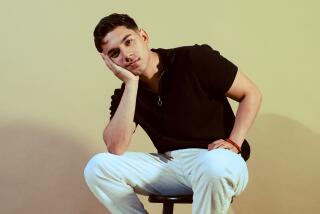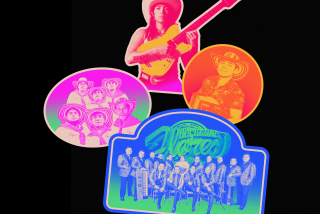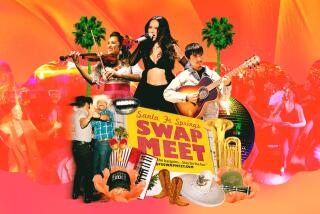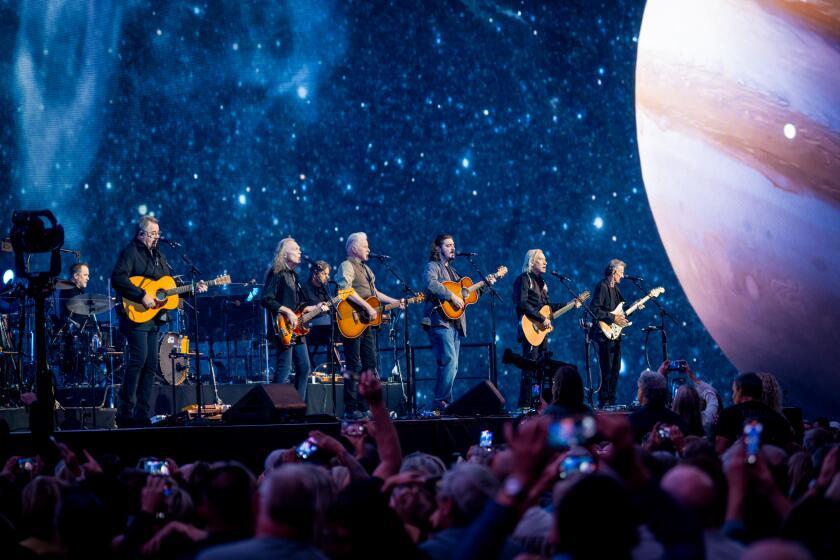Mariachi Music Finds New Life in Old Style : Trends: Traditional Mexican folk music is revived as a new breed of musicians crosses over into popular and classical fronts. They can be heard in San Diego this weekend.
SAN DIEGO — The golden age of mariachi music may have passed, but its advocates are not wallowing in nostalgic reveries. Nati Cano, leader of the Los Angeles mariachi group Los Camperos, sees a mariachi revival on the horizon. And young iconoclasts such as Jose Hernandez are expanding the mariachi idiom into crossover pop styles and even into symphonic repertory.
“Our children are waking up to the tradition,” said Cano, who came from his native Guadalajara in 1953 to play with the mariachi group Chapala in Mexicali, Baja California. “It’s like discovering the pyramids on a visit to the south of Mexico. We’re part of a long tradition, and we are making people aware that we’ve been doing this music for so many years.”
Cano and his traditional group are among the half dozen celebrities who will perform this weekend at the Mariachi Festival ’90 held at the San Diego Convention Center. Representative of the new breed of mariachi is Hernandez, who will perform with his Mariachi Sol de Mexico on the same Saturday concert as Cano. Hernandez and his mariachis are known for their reinterpretations of everything from rap to Mozart in mariachi style.
“There is no limit to what you can do,” explained the 32-year-old Los Angeles musician. “When we did a concert at the Hollywood Bowl in June, we did a spoof on rap music and played ballads like ‘Yesterday’ and ‘New York, New York.’ We also played an off-the-wall version of Mozart’s ‘Eine Kleine Nachtmusik.’ ”
Hernandez started experimenting with music outside the Mexican mainstream to increase his group’s repertory while playing six nights a week at a club in South El Monte.
“People who come to see a one-hour show expect a certain variety,” Hernandez explained, adding that the group even did some Elvis Presley ballads in mariachi style to the eventual approval of their fans.
Hernandez is conscious of the weight of musical tradition, however, and he has no intention of tampering with the beloved mariachi standards.
“It’s a constantly evolving tradition, and I would never dishonor it because the first one on my back would be my father. He plays the pure mariachi music as it was done 100 years ago, and he is the person I look back to whenever I have to do traditional songs.”
Hernandez started on the trumpet at age 10--it is still his preferred instrument--and picked up the mariachi sound by listening to his father and his older brother. According to Hernandez, his father Esteban Hernandez played with Cano in the 1950s when they were both part of Chapala.
Cano describes the 1950s as the golden age of mariachi music.
“I remember that’s when the Mexican song really became popular with the masters, the Frank Sinatras of Mexico. Those singers could not perform without the mariachi--the mariachi was 50% of whatever they did,” Cano observed. Although Jose Hernandez was not even whistling mariachi music in the 1950s, he agreed with Cano’s assesment of that decade.
“In the 1950s, record sales of mariachi music were really good and singers like Lola Beltran were in their prime. I prefer that style, full of heart and feeling. It’s hard to compare with today’s singing, but it would be like comparing recordings of Patsy Cline to Crystal Gayle. It’s all a little more commercial now.”
If singing styles have changed, so have the instruments mariachis play.
“The mariachi tradition started with a harp and a small guitar (know as the vihuela ), because the Mexican musicians did not have money to buy instruments from Europe,” Cano said. He noted that the Mexican version of the harp was not today’s massive steel-framed orchestral instrument, but a lightweight folk harp made of wood.
“Then came the violins and the bass guitar ( guitarron ). These early mariachi musicians played mainly in village plazas and markets, and especially at weddings, which is still the case today.”
Trumpets, now universally associated with the mariachi sound, were not added until radio stations wanted to broadcast mariachi music.
“In the late 1930s, they started to add one trumpet because a big radio station in Mexico City wanted more volume,” Cano said. “By the late 1940s, most groups had two trumpets, and today, if you have no trumpets, you’re not a mariachi.”
If the original mariachis were just four or five street musicians who played by ear, today’s professional ensembles, such as Cano’s and Hernandez’s, usually perform with a minimum of 12 players. They read charts and play sophisticated arrangements done by leaders who frequently compose in other styles, too.
The art of mariachi music has even expanded into college curricula. Cano teaches mariachi music at UCLA, and Hernandez has helped set up mariachi courses (which include arranging and scoring) at Cerritos College and Rio Hondo College in East Los Angeles.
And Hernandez--always looking for new audiences for mariachi music and new challenges to his own musicianship--is composing a concerto based on traditional mariachi rhythms for symphony orchestra and mariachis.
“I think people are ready for it,” he said. “I want to show everyone that mariachi is world-class music and is adaptable.”
More to Read
The biggest entertainment stories
Get our big stories about Hollywood, film, television, music, arts, culture and more right in your inbox as soon as they publish.
You may occasionally receive promotional content from the Los Angeles Times.










